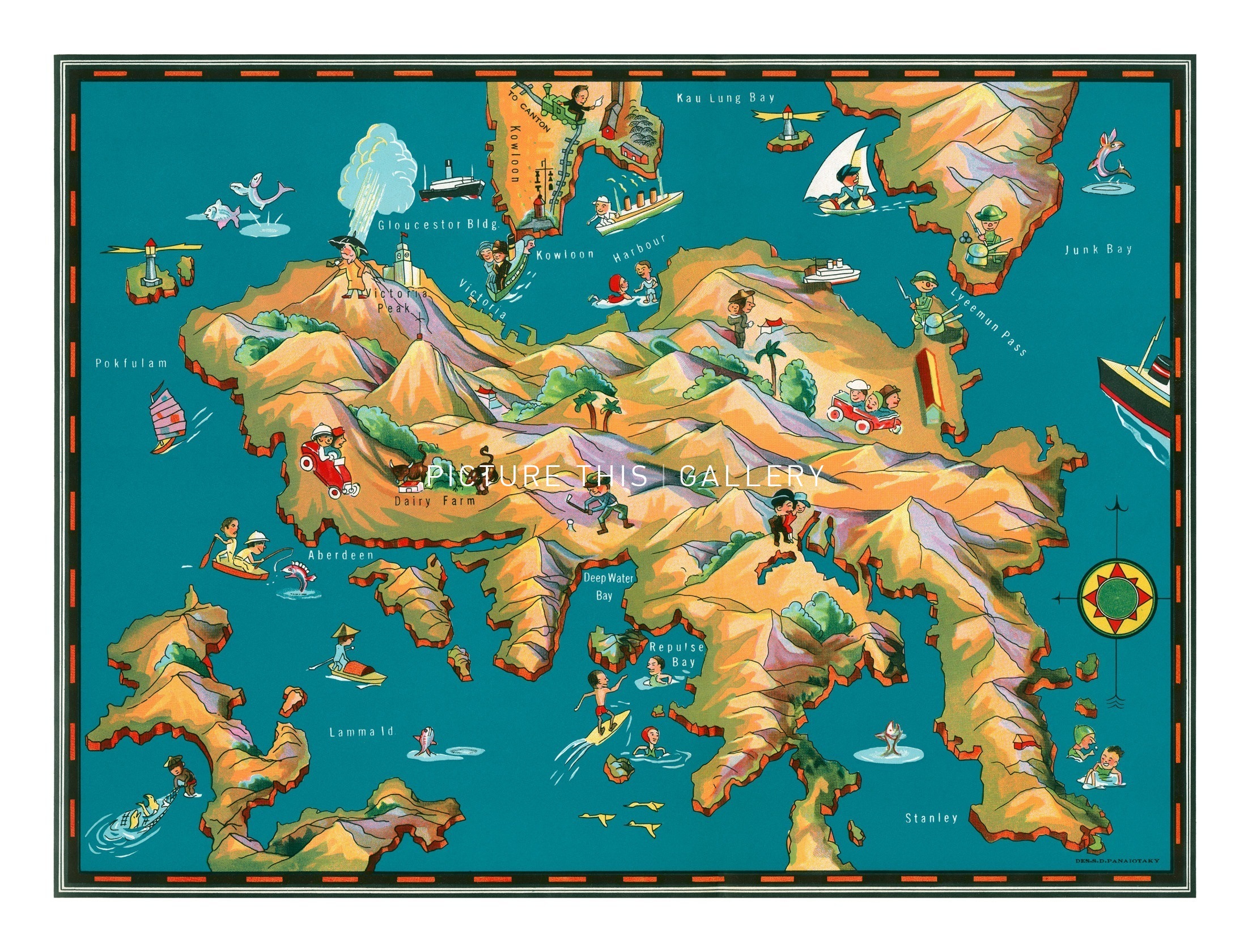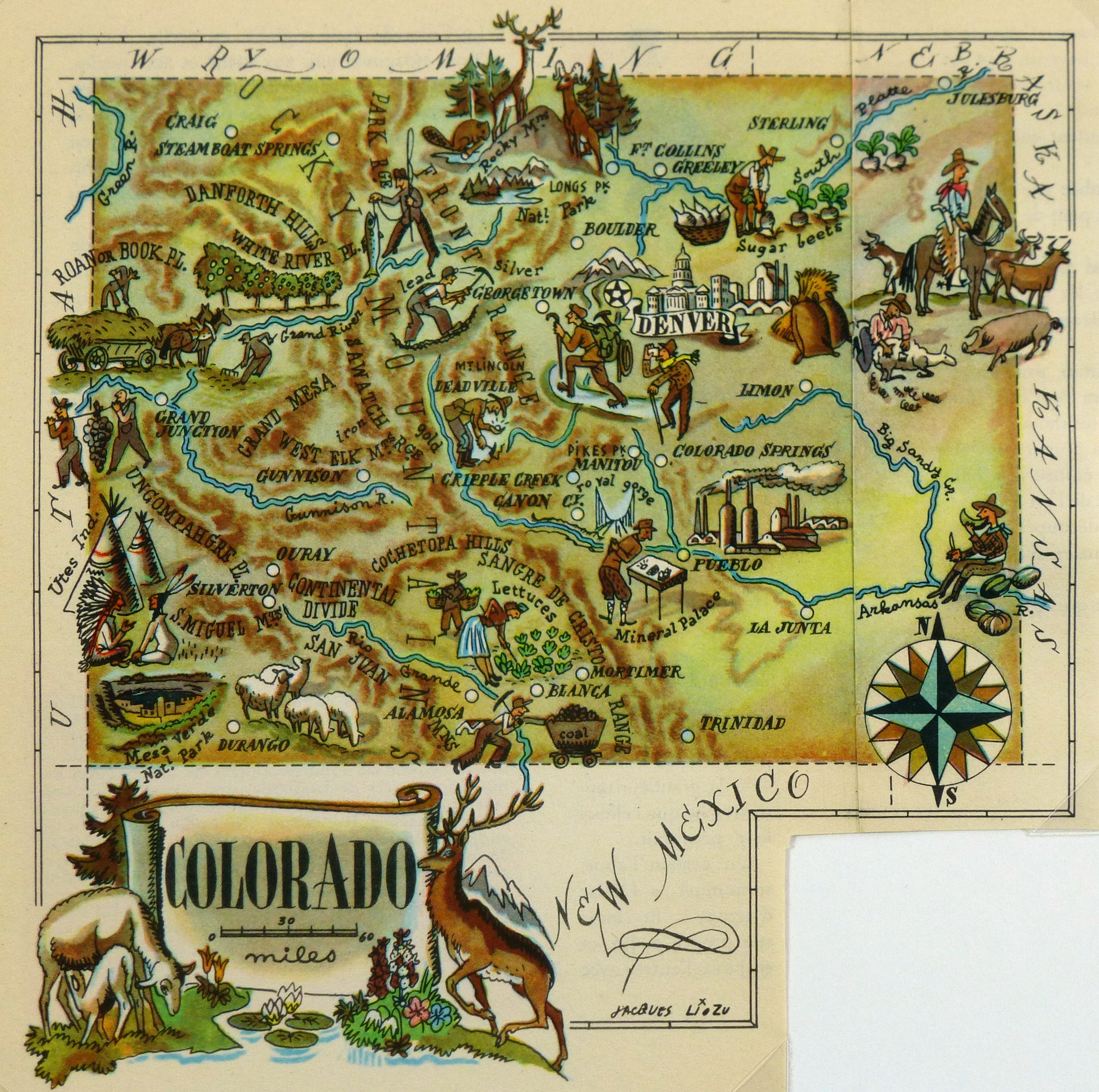
“In a sense they reflect the emergence of the United States as a world power,” he says. In it, he profiles Gill and other influential artists, and chronicles the rise and fall of pictorial mapping, which he argues took off in the ’20s and reached its creative zenith in mid-20th century America.

A sabbatical in 2013 gave him the opportunity to revisit them and do the research for the book. Pictorial maps weren’t a suitably serious topic of study for a graduate student in geography, so apart from collecting a few of them here and there, Hornsby mostly put his interest aside as he built his career. “I was fascinated by the imagery,” Hornsby says. Colorful ships ply the waters off the island’s coast. The map is lavishly illustrated with drawings of leopards, elephants, and other animals. Hornsby’s mother, a teacher, had a pictorial map of the island drawn by the influential British graphic artist MacDonald Gill. His family lived in Ceylon (now Sri Lanka) because his father was in the British Royal Air Force, which had a base there. Hornsby’s love of pictorial maps has roots in his childhood. “They reflect a pride in community and the usual American cheerful optimism, which is very appealing.” That kind of playfulness is common in pictorial maps. Meanwhile a thin, wavy black arrow labeled “17,000 dangerous miles” points to Florida, a black swamp filled with skeletons, a man-eating alligator, and-stranger still-a shivering Eskimo and penguin. Unauthorized use is prohibited.Īn angelic weatherman and a giant “Kissin’ sun” (the detail above) watch over California, which has co-opted several iconic attractions from other places, including Niagara Falls, the Grand Canyon, and Mount Everest. A bold yellow arrow connects New York City with the Golden State, claiming “About 200 delightful easy miles.”

and puts most of the country inside the Los Angeles city limit. The 1947 map at the top of this post, titled Map of the United States as Californians See It, compresses the eastern and central U.S. Some are geographically accurate others skew geography for the sake of simplicity or to make a point. Still others were made to appeal to schoolchildren and spark an interest in far-off people and places.

Others were made by state tourist boards and local chambers of commerce trying to lure visitors and businesses to their area. Many of the maps featured in his book were made by companies and printed on posters or brochures as a form of advertising. “They’re a manifestation of the enormous vibrancy of American popular culture,” Hornsby says. Pictorial maps thrived in the United States from the 1920s to the ’60s, says Stephen Hornsby, a professor of geography at the University of Maine and author of a new book, Picturing America: The Golden Age of Pictorial Maps. They’re maps designed to draw you in and-as often as not-try to sell you something, whether it’s a tropical vacation, a brand of bourbon, or a version of the American dream. The maps in the slideshow above represent an underappreciated form of American visual art: the pictorial map.


 0 kommentar(er)
0 kommentar(er)
